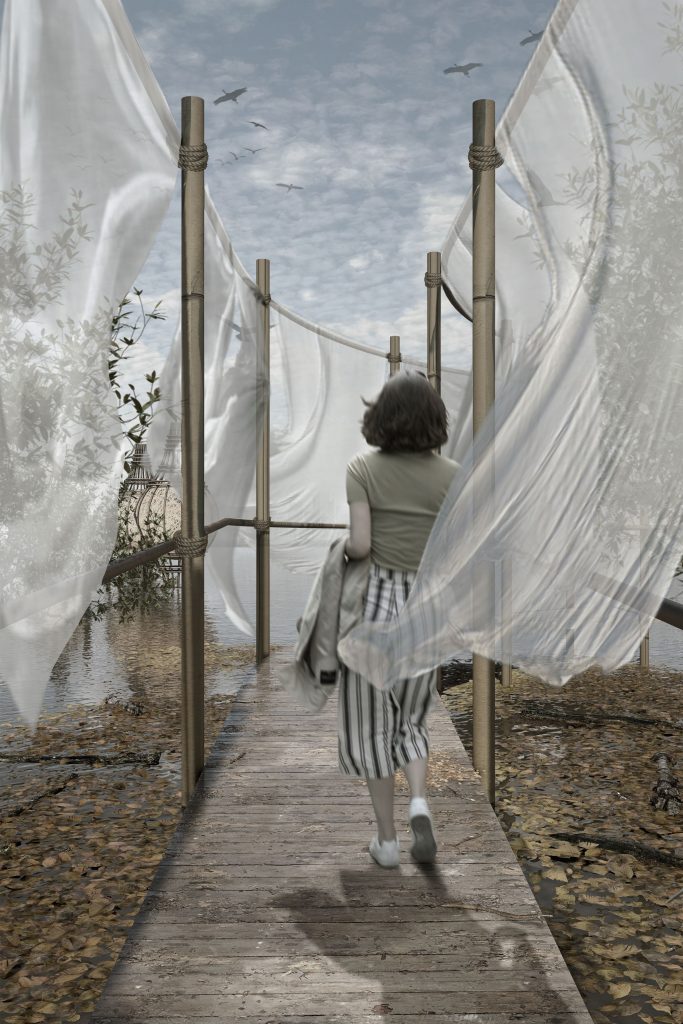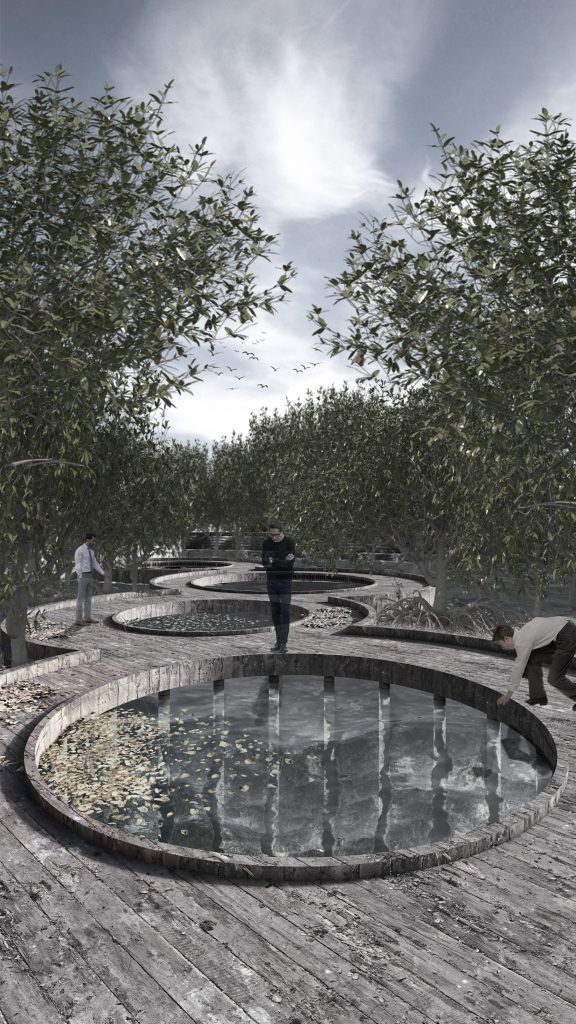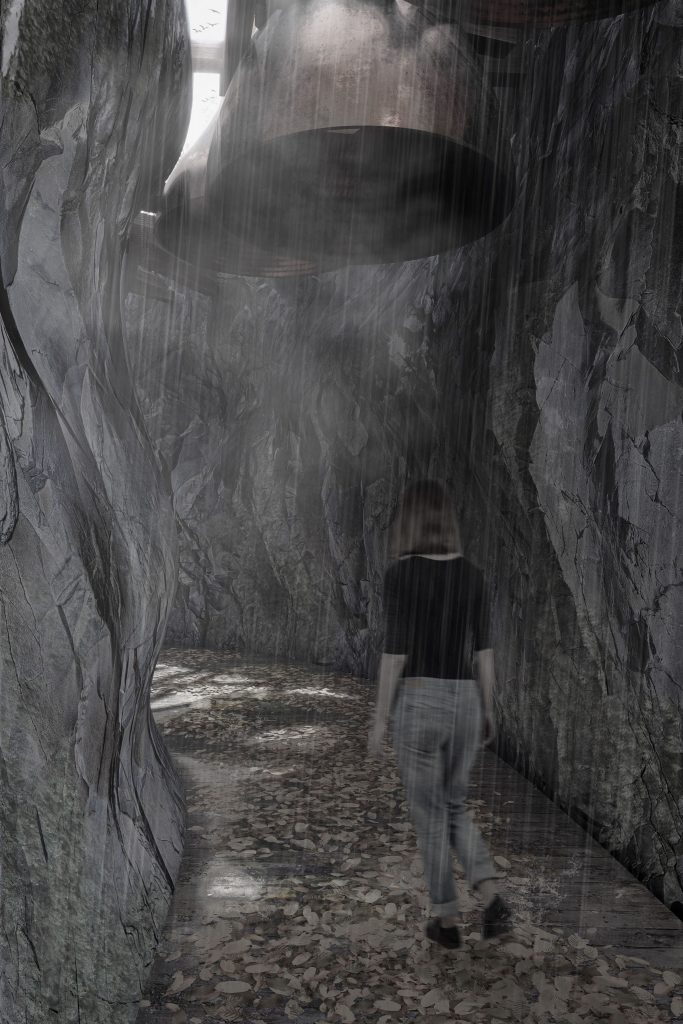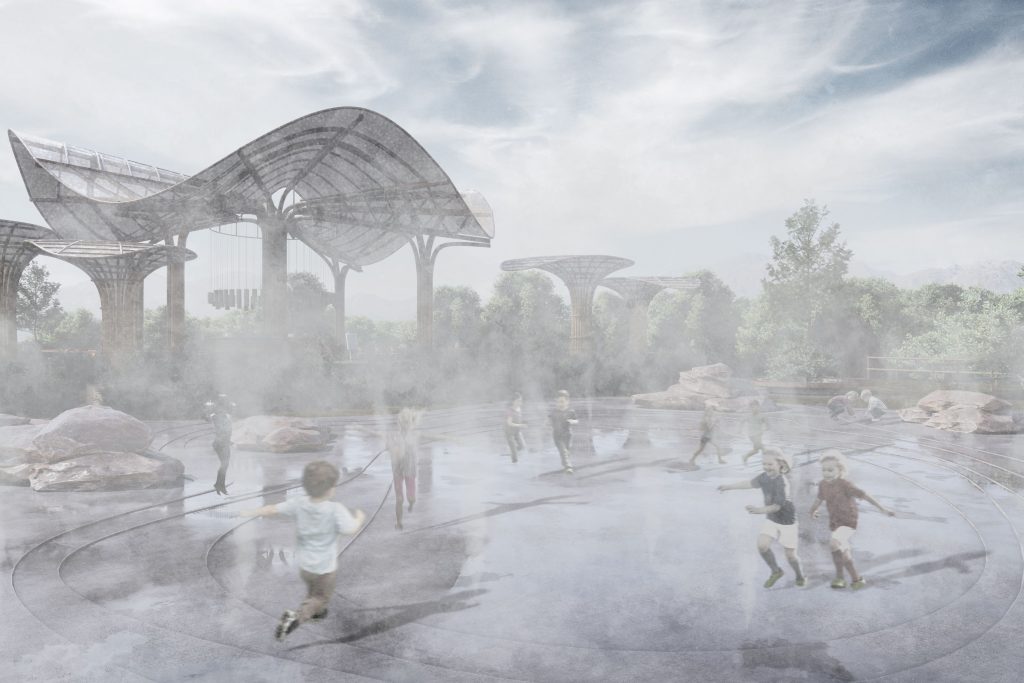Student retreat centre project wins first prize in international competition
By Maria Cook
November 23, 2023
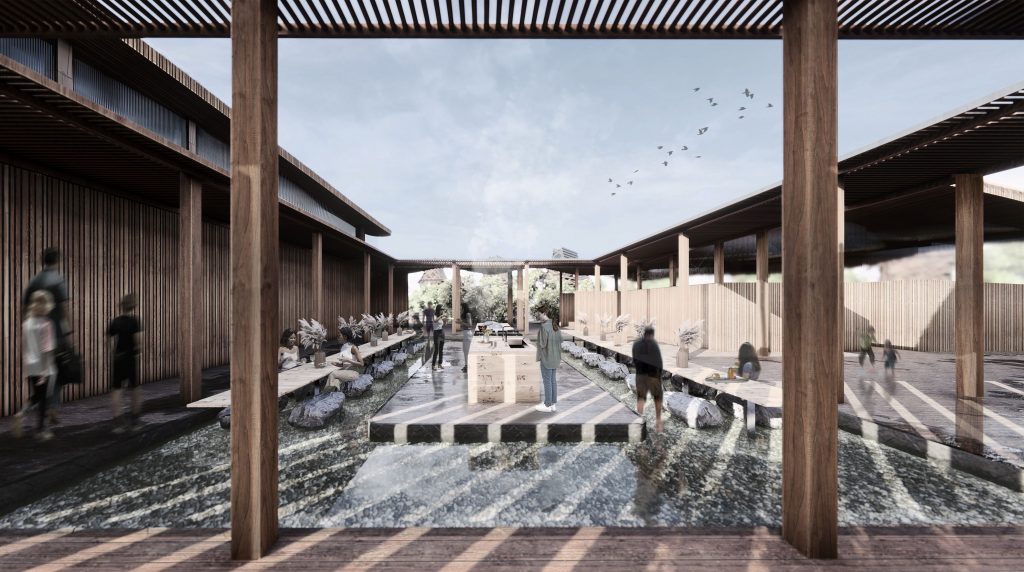
A three-person team that includes Mu Qu Jennifer Liu, a master’s student at the Azrieli School of Architecture & Urbanism, has won first prize in an international competition to design a retreat centre.
Liu, along with friends Natalie Cole Bajet and Nikki Elim Ng, recently took first place in the Retreat Center Design 2023 competition for a project called Pause Chaos, a retreat centre along the banks of the Tamsui River in New Taipei, Taiwan.
See the competition results here.

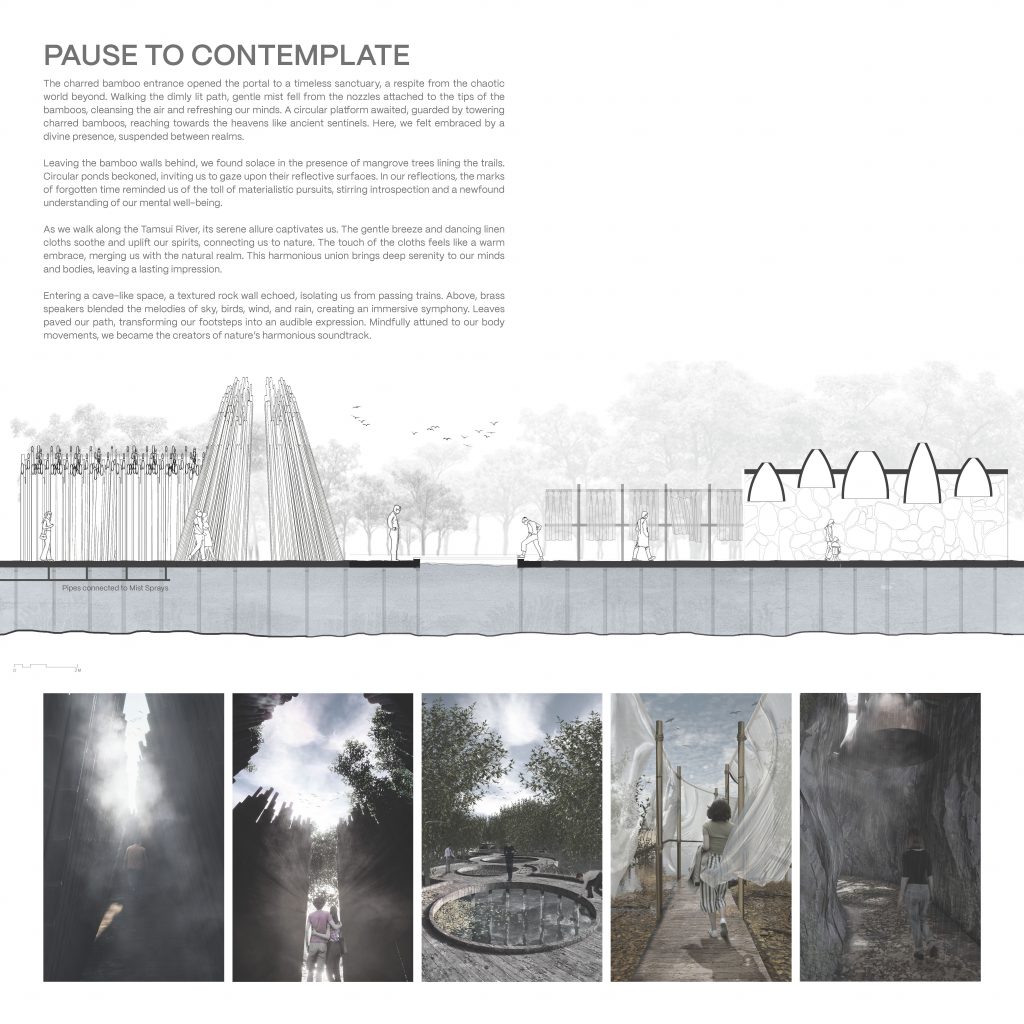
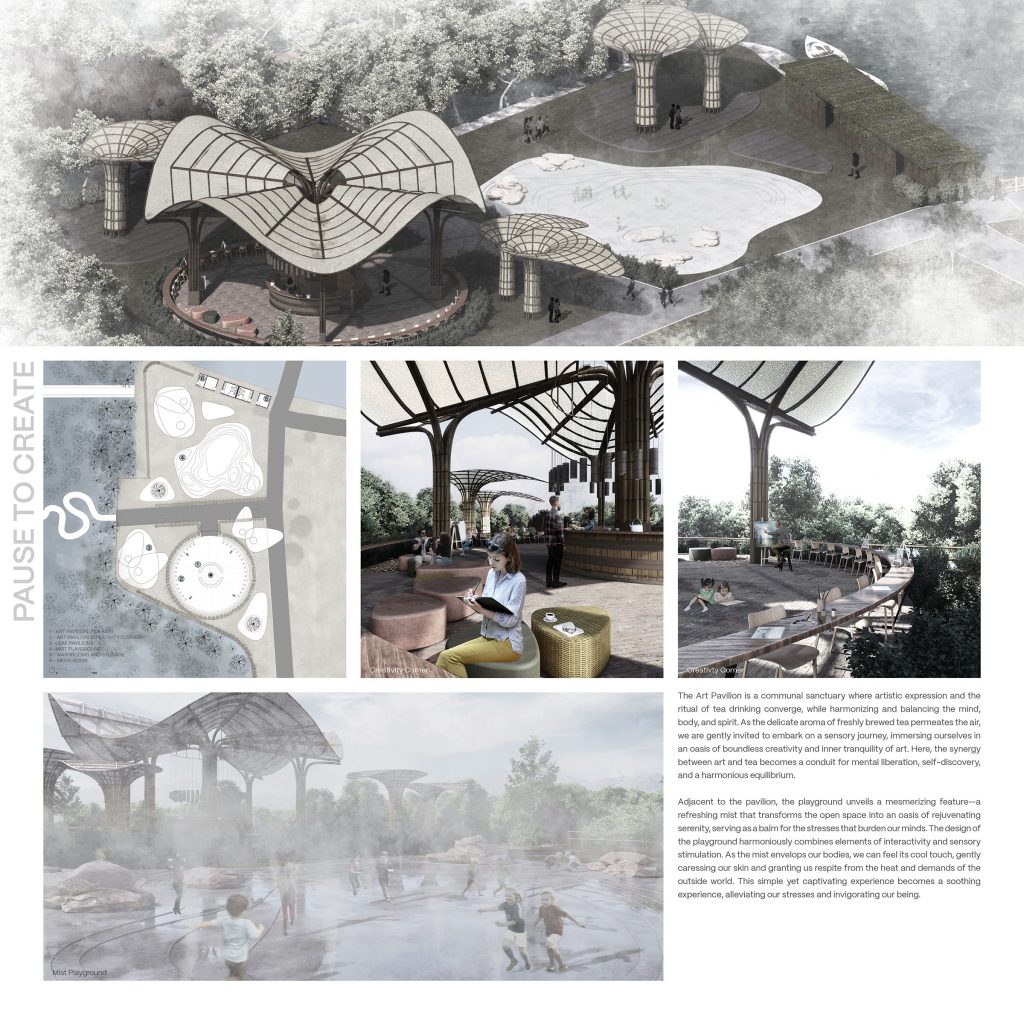
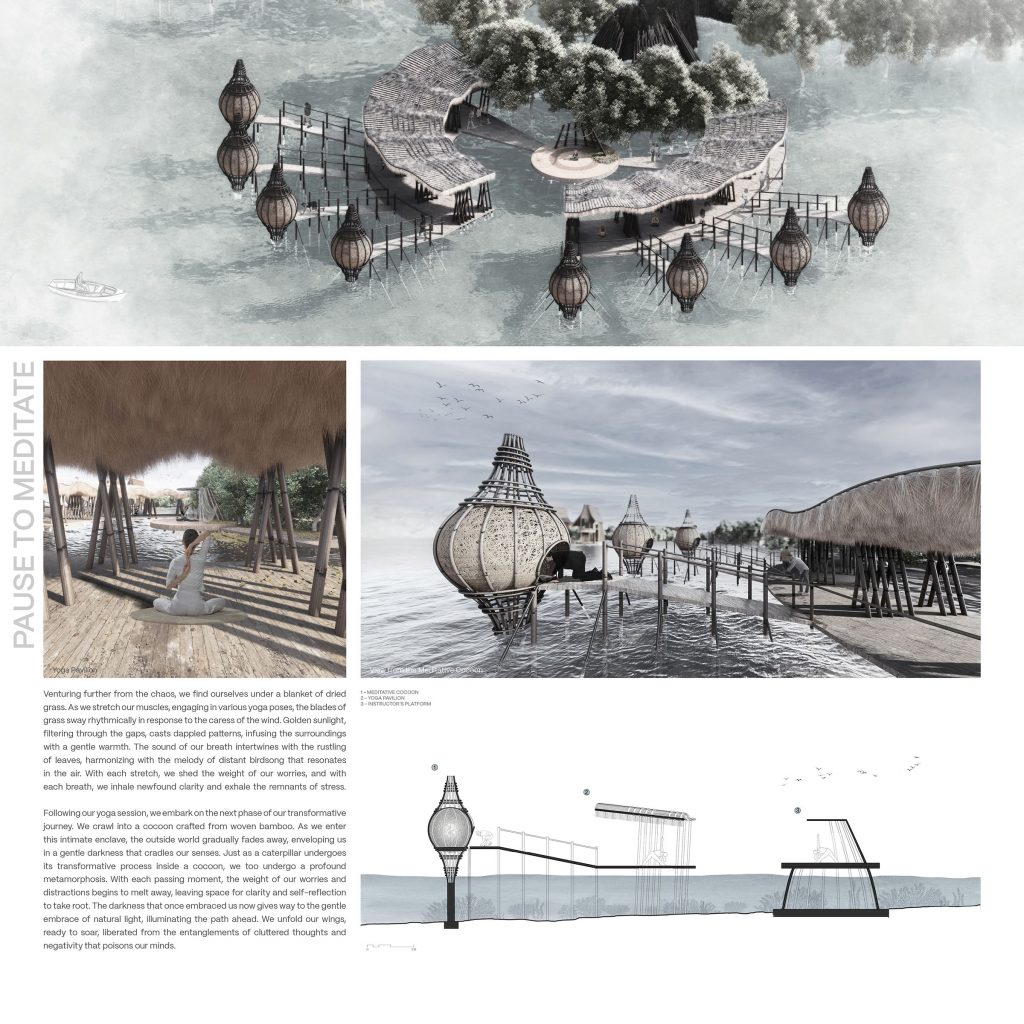
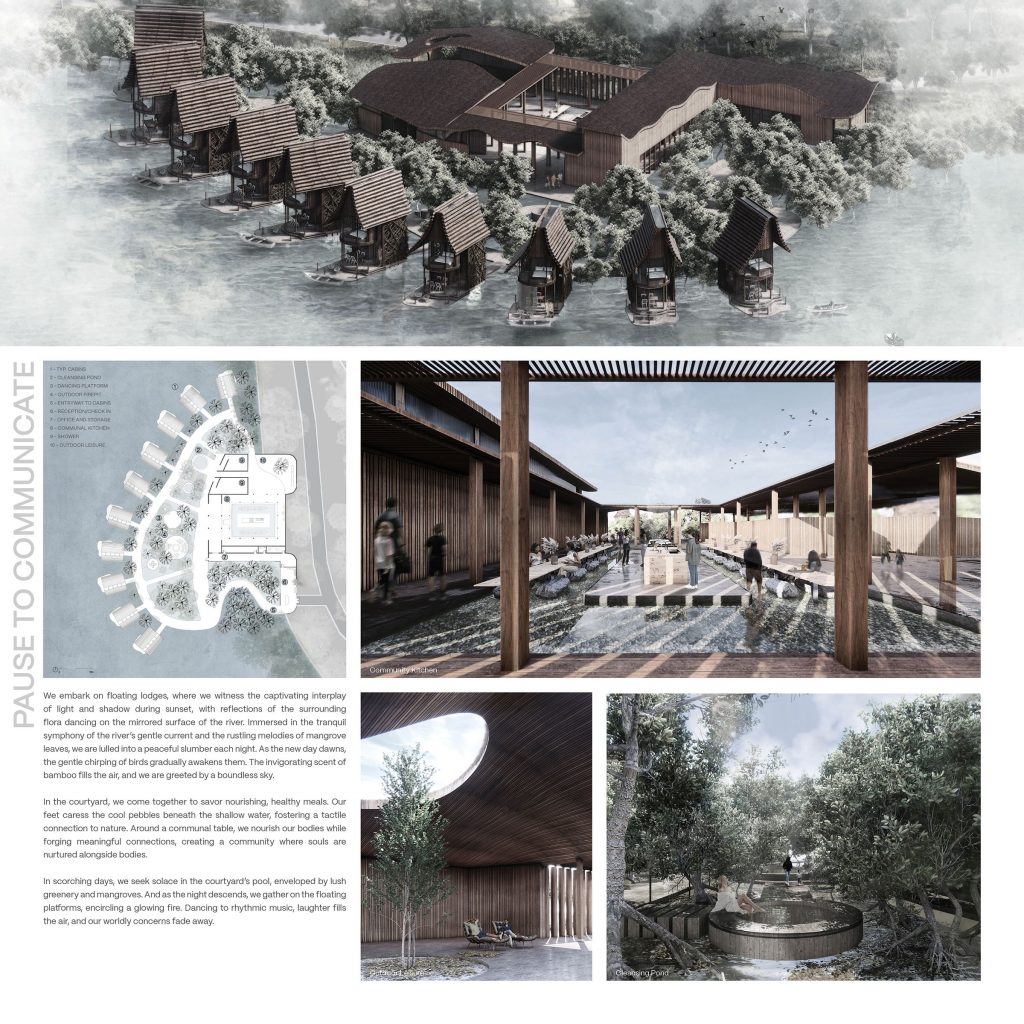
“We deliberately chose a city location near the chaos but connected to nature, specifically placing it within a mangrove forest along the river,” says Liu, who is in the first year of the three-year Master of Architecture program at Carleton University.
“The project aims to offer a haven of rejuvenation and solace to those seeking respite from the relentless pace of urban living.”
Organized in four distinct parts, Pause Chaos offers space for people to create, contemplate, meditate, and communicate. It uses local materials such as bamboo, emphasizes experiential qualities, and provides sanctuary for plants and animals as well as humans.
“This is a beautifully drawn project,” said a jury member. “The use of ephemera is delightful with strong materiality and ambiance.” Another juror called it a “very innovative yet evocative proposal.”


The online platform Archiol organized the competition to understand the possibilities of healing architectural spaces. “This competition challenges you to design architecture that fosters various levels of controlled interaction between people and space, which heals them mentally and physically,” said the brief.
Mu Qu Jennifer Liu, Natalie Cole Bajet & Nikki Elim Ng will receive a medal and certificate.
The three former classmates say they entered the competition to showcase knowledge they acquired during their undergraduate studies in the environmental design program at the University of Manitoba. Bajet and Ng are continuing their design studies at the University of Manitoba.
“As designers, we have a responsibility to acknowledge that our actions impact not only ourselves but the environment and its ecosystems,” they say. “The retreat centre represents more than a space for human healing; it serves as a sanctuary for the environment and its inhabitants, mending the wounds inflicted by human desires and actions.”
The competition’s second prize went to an entrant from China and the third prize was won by a team from Turkey.
PAUSE CHAOS – Project Statement
Each morning, as the first rays of sunlight ascend above the colossal structures of concrete, their radiant glow casts elongated silhouettes onto the bustling avenues of the urban landscape. The city awakens to the sound of the train passing through the Tamsui District, its loud and powerful rumble echoing through the surrounding area. The air carries a captivating blend of aromas — the rich and invigorating scent of freshly brewed coffee mingles with the acrid stench of exhaust fumes, creating a pungent cocktail that permeates every corner. Amidst these sensations, a faint yet unmistakable odor lingers — a reminder of the Tamsui river nearby, caught in a state of decay, emphasizing the environmental challenges faced by the urban environment.
The streets overflow with a sea of people, each one hustling towards their destination. Clad in crisp suits and ties, their white shirts neatly tucked in, and shoelaces tied, they navigate the urban jungle while diligently checking their phones to ensure they remain on time. Suddenly, the train doors open, and a wave of humanity surges into the metal carriage, filling every available inch. Crushed between strangers, the rising heat prompts beads of sweat to form, as people struggle to catch their breath in the confined space.

Such is the chaos of everyday life in this city.
Yet, amidst this chaos, a retreat emerges along the Tamsui riverbank and unfurls in four distinct parts, offering a space for people to create, contemplate, meditate, and communicate. The architecture harmonizes with the trees, rocks, and flowing waters, blurring the boundaries between the human realm and the organic world. In this symbiotic relationship, the retreat not only provides solace for visitors but also extends an invitation to the diverse flora and fauna that call this place home, encouraging their participation in the collective healing process.
At the core of the retreat’s design philosophy lies the use of organic materials sourced from the local region. Bamboos and dried grass, forms the integral elements of the architecture. Over time, these materials weather and decay, serving as poignant reminders of the transient nature of life. The gradual decay becomes a metaphor for the beauty and impermanence inherent in all living things, encouraging visitors to embrace the present moment and find solace in the ever-changing cycles of existence.
